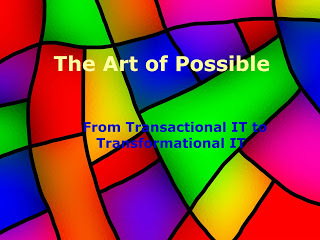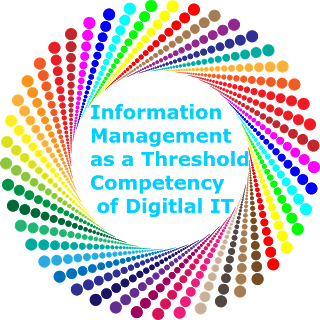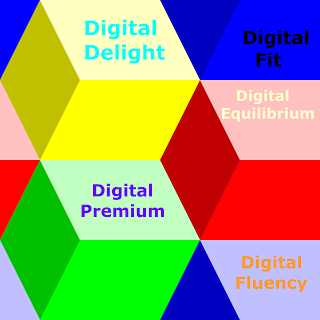Pearl Zhu's Blog, page 1278
November 13, 2016
How to Overcome Decision Fatigues
Decision fatigues can be overcome via identifying blind spots, pulling all resources, complimenting knowledge and filling insight gaps.
 One significant effect of digitization is increased velocity, complexity, unpredictability, and ambiguity. Therefore, there is a need of a faster response to changes in business and industry based on effective and efficient decision making. In fact, decision-making is one of the most important activities for today’s digital leaders and professionals. Often people rush up to make so-so decisions or are too procrastinated to make timely decisions. Statistically, the high ratio of strategic decisions have been made poorly and cause the catastrophic effect. What are the root causes of those decision failures, and how to survive from decision fatigue and improve overall business decision effectiveness?
One significant effect of digitization is increased velocity, complexity, unpredictability, and ambiguity. Therefore, there is a need of a faster response to changes in business and industry based on effective and efficient decision making. In fact, decision-making is one of the most important activities for today’s digital leaders and professionals. Often people rush up to make so-so decisions or are too procrastinated to make timely decisions. Statistically, the high ratio of strategic decisions have been made poorly and cause the catastrophic effect. What are the root causes of those decision failures, and how to survive from decision fatigue and improve overall business decision effectiveness?
Cognitive blind spots: Due to complexity of business problems today, collective decision making is a common practice in organizations today. To avoid cognitive blind spots, it’s best to bring a group of people together with the cognitive difference such as different backgrounds, capabilities, strengths etc, together in order to obtain such a way of divergent thinking for sparking creativity; convergent thinking for common understanding and critical thinking for identify blind spots. It’s best for thinking in multidimensional way to really hone in on the "why." Once you figure out what the true problems are, apply systems thinking for solving complex problems with creativity and flexibility. Because people who can see the bigger picture, abstract the insight from the overloading information, leverage the multitude of thought processes, and are not living the day-to-day activities, are needed to clear blind spots. Be consciously identify your decision blind spots by seeing around the corner and looking beneath the surface, listening, asking questions and pursue collective wisdom.
Silo thinking: In today's volatile economy, nothing impedes progress or causes decision fatigue more than protective silos which are simply a form of bureaucratic amorphous mass designed to preserve the status quo. “Silo” is due to a lack of sufficient resources or small thinking, most business managers and teams operate with an incomplete and relatively small view of the business ecosystem, when they keep moving forward, they create the blind spots, or jump to the wrong conclusions. The managers today, especially senior leaders should have the ability to see the big picture, to complement the team’s viewpoint for bridging gaps and overcoming decision fatigue. Also, it's important to encourage teams to "think in bigger boxes," engage all employees in improving their processes, and create the expectation that collaboration and mutual respect are valued above everything else.
 Unconscious bias: We all have bias, especially unconscious bias, more or less, due to cognitive difference, limited knowledge and experience. It is one of the biggest barrier to improve decision maturity. From business management perspective, the variation in decisions to be made vary tremendously across the developmental spectrum. Timelines and content play havoc with decisions to be made. Both intuition and analysis have the role in decision making. Check if there is a link between ‘bias’ and ‘perception’ in terms of how we make decisions and build trust. A great way to manage bias is to simply get it out in the open communication environment. In a collaborative decision atmosphere, let individuals embrace their bias by sharing it with others in a non-threatening context. This can help to enable the "wisdom of crowds" as a source of improved decision-making effectiveness and maturity.
Unconscious bias: We all have bias, especially unconscious bias, more or less, due to cognitive difference, limited knowledge and experience. It is one of the biggest barrier to improve decision maturity. From business management perspective, the variation in decisions to be made vary tremendously across the developmental spectrum. Timelines and content play havoc with decisions to be made. Both intuition and analysis have the role in decision making. Check if there is a link between ‘bias’ and ‘perception’ in terms of how we make decisions and build trust. A great way to manage bias is to simply get it out in the open communication environment. In a collaborative decision atmosphere, let individuals embrace their bias by sharing it with others in a non-threatening context. This can help to enable the "wisdom of crowds" as a source of improved decision-making effectiveness and maturity.
Decision fatigues can be overcome via identifying blind spots, pulling all resources, complimenting knowledge and filling insight gaps. The digital decision making style is to think fast and slow, think independently and critically, leverage multiple perspectives; analyze and synthesize for making the right decisions at the right time by the right people to solve the right problems.
Follow us at: @Pearl_Zhu
 One significant effect of digitization is increased velocity, complexity, unpredictability, and ambiguity. Therefore, there is a need of a faster response to changes in business and industry based on effective and efficient decision making. In fact, decision-making is one of the most important activities for today’s digital leaders and professionals. Often people rush up to make so-so decisions or are too procrastinated to make timely decisions. Statistically, the high ratio of strategic decisions have been made poorly and cause the catastrophic effect. What are the root causes of those decision failures, and how to survive from decision fatigue and improve overall business decision effectiveness?
One significant effect of digitization is increased velocity, complexity, unpredictability, and ambiguity. Therefore, there is a need of a faster response to changes in business and industry based on effective and efficient decision making. In fact, decision-making is one of the most important activities for today’s digital leaders and professionals. Often people rush up to make so-so decisions or are too procrastinated to make timely decisions. Statistically, the high ratio of strategic decisions have been made poorly and cause the catastrophic effect. What are the root causes of those decision failures, and how to survive from decision fatigue and improve overall business decision effectiveness? Cognitive blind spots: Due to complexity of business problems today, collective decision making is a common practice in organizations today. To avoid cognitive blind spots, it’s best to bring a group of people together with the cognitive difference such as different backgrounds, capabilities, strengths etc, together in order to obtain such a way of divergent thinking for sparking creativity; convergent thinking for common understanding and critical thinking for identify blind spots. It’s best for thinking in multidimensional way to really hone in on the "why." Once you figure out what the true problems are, apply systems thinking for solving complex problems with creativity and flexibility. Because people who can see the bigger picture, abstract the insight from the overloading information, leverage the multitude of thought processes, and are not living the day-to-day activities, are needed to clear blind spots. Be consciously identify your decision blind spots by seeing around the corner and looking beneath the surface, listening, asking questions and pursue collective wisdom.
Silo thinking: In today's volatile economy, nothing impedes progress or causes decision fatigue more than protective silos which are simply a form of bureaucratic amorphous mass designed to preserve the status quo. “Silo” is due to a lack of sufficient resources or small thinking, most business managers and teams operate with an incomplete and relatively small view of the business ecosystem, when they keep moving forward, they create the blind spots, or jump to the wrong conclusions. The managers today, especially senior leaders should have the ability to see the big picture, to complement the team’s viewpoint for bridging gaps and overcoming decision fatigue. Also, it's important to encourage teams to "think in bigger boxes," engage all employees in improving their processes, and create the expectation that collaboration and mutual respect are valued above everything else.
 Unconscious bias: We all have bias, especially unconscious bias, more or less, due to cognitive difference, limited knowledge and experience. It is one of the biggest barrier to improve decision maturity. From business management perspective, the variation in decisions to be made vary tremendously across the developmental spectrum. Timelines and content play havoc with decisions to be made. Both intuition and analysis have the role in decision making. Check if there is a link between ‘bias’ and ‘perception’ in terms of how we make decisions and build trust. A great way to manage bias is to simply get it out in the open communication environment. In a collaborative decision atmosphere, let individuals embrace their bias by sharing it with others in a non-threatening context. This can help to enable the "wisdom of crowds" as a source of improved decision-making effectiveness and maturity.
Unconscious bias: We all have bias, especially unconscious bias, more or less, due to cognitive difference, limited knowledge and experience. It is one of the biggest barrier to improve decision maturity. From business management perspective, the variation in decisions to be made vary tremendously across the developmental spectrum. Timelines and content play havoc with decisions to be made. Both intuition and analysis have the role in decision making. Check if there is a link between ‘bias’ and ‘perception’ in terms of how we make decisions and build trust. A great way to manage bias is to simply get it out in the open communication environment. In a collaborative decision atmosphere, let individuals embrace their bias by sharing it with others in a non-threatening context. This can help to enable the "wisdom of crowds" as a source of improved decision-making effectiveness and maturity.Decision fatigues can be overcome via identifying blind spots, pulling all resources, complimenting knowledge and filling insight gaps. The digital decision making style is to think fast and slow, think independently and critically, leverage multiple perspectives; analyze and synthesize for making the right decisions at the right time by the right people to solve the right problems.
Follow us at: @Pearl_Zhu
Published on November 13, 2016 23:03
How to Overcome Decision Fatigue
 One significant effect of digitization is increased velocity, complexity, unpredictability, and ambiguity. Therefore, there is a need or a faster response to changes in business and industry based on effective and efficient decision making. In fact, decision-making is one of the most important activities for today’s digital leaders and professionals. Often people rush up to make so-so decisions or are too procrastinated to make timely decisions. Statistically, the high ratio of strategic decisions have been made poorly and cause the catastrophic effect. What are the root causes of those decision failures, and how to survive from decision fatigue and improve overall business decision effectiveness.
One significant effect of digitization is increased velocity, complexity, unpredictability, and ambiguity. Therefore, there is a need or a faster response to changes in business and industry based on effective and efficient decision making. In fact, decision-making is one of the most important activities for today’s digital leaders and professionals. Often people rush up to make so-so decisions or are too procrastinated to make timely decisions. Statistically, the high ratio of strategic decisions have been made poorly and cause the catastrophic effect. What are the root causes of those decision failures, and how to survive from decision fatigue and improve overall business decision effectiveness. Cognitive blind spots: Due to complexity of business problems today, collective decision making is a common practice in organizations today. To avoid cognitive blind spots, it’s best to bring a group of people together with the cognitive difference such as different backgrounds, capabilities, strengths etc, together in order to obtain such a way of divergent thinking for sparking creativity; convergent thinking for common understanding, It’s best it will better go more convergent to really hone in on the "why." Once you figure out what the true problems are, leverage critical thinking for identify blind spots, and apply systems thinking for solving complex problems with flexibility. Because people who can see the bigger picture, abstract the insight from the overloading information, apply the multitude of thought processes, and are not living the day-to-day activities, are needed to clear blind spots. Be consciously identify your decision blind spot by seeing around the corner and looking beneath the surface.
Silo thinking: In today's volatile economy, nothing impedes progress or causes decision fatigue more than protective silos which are simply a form of bureaucratic amorphous mass designed to preserve the status quo. “Silo” is due to a lack of sufficient resources or small thinking, most business managers and teams operate with an incomplete and relatively small view of the business ecosystem, when they keep moving forward, they create the blind spots, or jump to the wrong conclusions. The managers today, especially senior leaders should have the ability to see the big picture, to complement team’s viewpoint for bridging gaps and overcoming decision fatigue. Also, it's important to encourage teams to "think in bigger boxes," engage all employees in improving their processes, and create the expectation that collaboration and mutual respect are valued above everything else.
 Unconscious bias: The variation in decisions to be made vary tremendously across the developmental spectrum. Timelines and content play havoc with decisions to be made. Both intuition and analysis have the role in decision making. Check if there is a link between ‘bias’ and ‘perception’ in terms of how we make decisions and build trust. A great way to manage bias is to simply get it out in the open communication environment. In a collaborative decision, let individuals embrace their bias by sharing it with others in a non-threatening context. This can help to enable the "wisdom of crowds" as a source of improved decision-making.
Unconscious bias: The variation in decisions to be made vary tremendously across the developmental spectrum. Timelines and content play havoc with decisions to be made. Both intuition and analysis have the role in decision making. Check if there is a link between ‘bias’ and ‘perception’ in terms of how we make decisions and build trust. A great way to manage bias is to simply get it out in the open communication environment. In a collaborative decision, let individuals embrace their bias by sharing it with others in a non-threatening context. This can help to enable the "wisdom of crowds" as a source of improved decision-making.Decision fatigue can be overcome via identifying blind spots, pulling all resources, and filling knowledge and insight gaps. The digital decision making style is to think fast and slow, think independently and leverage multiple perspectives; analyze and synthesize for making the right decisions at the right time by the right people.
Follow us at: @Pearl_Zhu
Published on November 13, 2016 23:03
The New book “IT Innovation” Conclusion: The Art of Possible - How to Shift from Transactional IT to Transformational IT
 Within abundant information and emergent digital technologies, IT is a key component of holistic business mindset to reimagine “what is possible,” - unleashing business potentials and improving business efficiency, effectiveness and maturity. Compared to digital laggards, high-performing organizations we referred as digital masters, can manage two most invaluable assets in business well: People and information. Organizations across industries declare they are in the information management business, given this assertion, there is no limit to the value of information in our economy or better stated, in today’s digital business ecosystem. The art of possible to reinvent IT for the digital ready is to deliver the value of information in helping businesses grow, delight customers and doing more with innovation.
Within abundant information and emergent digital technologies, IT is a key component of holistic business mindset to reimagine “what is possible,” - unleashing business potentials and improving business efficiency, effectiveness and maturity. Compared to digital laggards, high-performing organizations we referred as digital masters, can manage two most invaluable assets in business well: People and information. Organizations across industries declare they are in the information management business, given this assertion, there is no limit to the value of information in our economy or better stated, in today’s digital business ecosystem. The art of possible to reinvent IT for the digital ready is to deliver the value of information in helping businesses grow, delight customers and doing more with innovation.“The art of possible” from the customer’s lens: Ultimately IT needs to discuss with customers about “what’s possible” not just “what do you want.” Digital is the age of customers. The art of possible is not about taking orders only, don’t just deliver what the business ask for, but about knowing the better way to do things, be able to provide the “best or most innovative solution” for the businesses’ requirement, offering added value and feature insight based on systemtem understanding, that the business might not even have thought of. This requires building a trustworthy partnership with the business to deliver tailored customer-centric solution.
“The art of possible” is that it involves new ways of bringing together ideas and resources to create something novel: Digital is the age of options, it provides the opportunity to think the new way to do things, so it forces IT leaders to be proactive and get really creative on how they architect and implement changes, to ensure IT is strategically positioned to be ahead of where the business is moving new. To digitize and innovate IT, CIOs should look to businesses outside their industry to spur “out-of-the-box thinking” and inspire dot-connecting innovation. If the art of innovation is to connect unusual dots and reach the “Eureka moment,” and then the science of innovation is to manage innovation life cycle and execute in a systematic manner that provides sustained competitive advantage.
 “The art of Possible” can be achieved via striking the balance of stability and growth: In order to make a solid digital transformation, there are a lot of seemly paradoxical, but indeed coherent elements in running high-effective IT today. Being hybrid means to apply “balance” as a management philosophy, take the disciplinary approach for balancing stability and agility; standardization and innovation; management and governance; centralizing and decentralizing IT, leading from the front and running a back office IT. IT needs to have the right mix of innovation portfolio in order to achieve both incremental progress and breakthrough business or product transformation. The art of possible is achieved via building innovation capabilities because breakthroughs and transformational innovations are not something every business can accomplish, you have to systematically develop and sharpen those abilities which can not be built overnight.
“The art of Possible” can be achieved via striking the balance of stability and growth: In order to make a solid digital transformation, there are a lot of seemly paradoxical, but indeed coherent elements in running high-effective IT today. Being hybrid means to apply “balance” as a management philosophy, take the disciplinary approach for balancing stability and agility; standardization and innovation; management and governance; centralizing and decentralizing IT, leading from the front and running a back office IT. IT needs to have the right mix of innovation portfolio in order to achieve both incremental progress and breakthrough business or product transformation. The art of possible is achieved via building innovation capabilities because breakthroughs and transformational innovations are not something every business can accomplish, you have to systematically develop and sharpen those abilities which can not be built overnight.Exceptional IT leadership is key to reimagine IT as an innovation hub to achieve the art of possible. The challenge to reinvent IT for the digital age is having a harmonized vision about overall IT management philosophy, capability, structure, and maturity in a digital organization, and develop the best and best practices in running highly innovative IT, with ultimate goals to bring high-performing business results and long-term prosperity. Follow us at: @Pearl_Zhu
Published on November 13, 2016 23:00
November 12, 2016
The CIO's Digital Agenda: Five Big “Why”s in IT Digital Transformation Nov. 2016
Debating is not for stimulating conflicts, but for brainstorming better ways to do things.
 Due to the changing nature of technology, IT leadership role also continues to involve and shift the focus, to move up the maturity level. More and more CIOs are requested to take more responsibility and many CIOs present the breadth of leadership competency. The proactive IT debates help IT leaders to brainstorm innovative and better ways to do things, and improve management capabilities. Here are the monthly CIO debates collections for Nov, 2016.
Due to the changing nature of technology, IT leadership role also continues to involve and shift the focus, to move up the maturity level. More and more CIOs are requested to take more responsibility and many CIOs present the breadth of leadership competency. The proactive IT debates help IT leaders to brainstorm innovative and better ways to do things, and improve management capabilities. Here are the monthly CIO debates collections for Nov, 2016.
Five Big “Why”s in IT Digital TransformationWhy is IT so Reluctant to Look at itself? With the rate of change is accelerated, it’s very important for contemporary organizations to continually do “self-reflection’ upon the business effectiveness, process efficiency, strength and risks, culture and brand etc. IT is a critical component of the business, commonly IT self-evaluation ability is a reflection on overall business culture within the whole organization. Some say IT is so reluctant to look at itself, is it true?
IT Skills Gap: Why does it happen and how to Fill it? Due to the changing nature of technology and accelerating speed of business changes, among the most pervasive and persistent concerns or complaints from IT leaders is the skills gaps, such as their people do not have the right competencies; they can’t find the right skills to fill the positions or their non-IT partners do not understand IT, etc. Are such problems an organization specific, or systematic? And how to mind the gaps and achieve business goals?
Why IT Doesn’t Get Respected? IT seems to be always at the paradoxical position, on one hand, technology is omnipresent, touch every corner of enterprise, on the other hand, many IT organizations earn very little respect from business peers, why, and how to turn around?
Why Has IT Been Perceived as the ‘Weakest Link’ ? IT plays a more important role in the digital transformation of the organization. It is the superglue to connect both the hard elements of the business such as processes, platforms, technologies and soft elements of the organization such as information, knowledge, culture and integrate them into a set of business capabilities, which underpin the business strategy. However, there is the perception gap between IT looks at itself and the business perceives IT. IT is often seen itself as a business enabler and change agent, but business often thinks that IT is slower to change, and even be one of the “weakest links” for the business transformation. So why is IT not getting enough respect despite all good work and huge efforts were undertaken? Where does it link to improve IT brand? To deal with such a "He said, she said" dilemma: What are the different perspectives from each party, how to integrate them into a holistic IT view and reinvent the tarnished IT reputation?
 Application Rationalization & Modernization: Why is Sun Never Set? Most information technology (IT) departments split their time between implementing new and maintaining existing technology. On the software side, most of the focus are on applications supporting business processes. A new application is usually intended to replace an outdated (legacy) application. However, both will typically run in production until the new application is proven, after which the legacy application is obsolesced (no longer used) and sunset (no longer maintained, usually removed). At least, in theory, that is how it is all supposed to work. However, in practice, legacy applications are rarely sunset. Why??
Application Rationalization & Modernization: Why is Sun Never Set? Most information technology (IT) departments split their time between implementing new and maintaining existing technology. On the software side, most of the focus are on applications supporting business processes. A new application is usually intended to replace an outdated (legacy) application. However, both will typically run in production until the new application is proven, after which the legacy application is obsolesced (no longer used) and sunset (no longer maintained, usually removed). At least, in theory, that is how it is all supposed to work. However, in practice, legacy applications are rarely sunset. Why??
The “Future of CIO” Blog has reached 1.5 million page views with 3200+ blog posting in 59+ different categories of leadership, management, strategy, digitalization, change/talent, etc. blog posting. The content richness is not for its own sake, but to convey the vision and share the wisdom. Blogging is not about writing, but about thinking and innovating the new ideas; it’s not just about WHAT to say, but about WHY to say, and HOW to say it. It reflects the color and shade of your thought patterns, and it indicates the peaks and curves of your thinking waves. Unlike pure entertainment, quality and professional content takes time for digesting, contemplation and engaging, and therefore, it takes time to attract the "hungry minds" and the "deep souls." It’s the journey to amplify diverse voices and deepen digital footprints, and it's the way to harness your innovative spirit.Follow us at: @Pearl_Zhu
 Due to the changing nature of technology, IT leadership role also continues to involve and shift the focus, to move up the maturity level. More and more CIOs are requested to take more responsibility and many CIOs present the breadth of leadership competency. The proactive IT debates help IT leaders to brainstorm innovative and better ways to do things, and improve management capabilities. Here are the monthly CIO debates collections for Nov, 2016.
Due to the changing nature of technology, IT leadership role also continues to involve and shift the focus, to move up the maturity level. More and more CIOs are requested to take more responsibility and many CIOs present the breadth of leadership competency. The proactive IT debates help IT leaders to brainstorm innovative and better ways to do things, and improve management capabilities. Here are the monthly CIO debates collections for Nov, 2016.Five Big “Why”s in IT Digital TransformationWhy is IT so Reluctant to Look at itself? With the rate of change is accelerated, it’s very important for contemporary organizations to continually do “self-reflection’ upon the business effectiveness, process efficiency, strength and risks, culture and brand etc. IT is a critical component of the business, commonly IT self-evaluation ability is a reflection on overall business culture within the whole organization. Some say IT is so reluctant to look at itself, is it true?
IT Skills Gap: Why does it happen and how to Fill it? Due to the changing nature of technology and accelerating speed of business changes, among the most pervasive and persistent concerns or complaints from IT leaders is the skills gaps, such as their people do not have the right competencies; they can’t find the right skills to fill the positions or their non-IT partners do not understand IT, etc. Are such problems an organization specific, or systematic? And how to mind the gaps and achieve business goals?
Why IT Doesn’t Get Respected? IT seems to be always at the paradoxical position, on one hand, technology is omnipresent, touch every corner of enterprise, on the other hand, many IT organizations earn very little respect from business peers, why, and how to turn around?
Why Has IT Been Perceived as the ‘Weakest Link’ ? IT plays a more important role in the digital transformation of the organization. It is the superglue to connect both the hard elements of the business such as processes, platforms, technologies and soft elements of the organization such as information, knowledge, culture and integrate them into a set of business capabilities, which underpin the business strategy. However, there is the perception gap between IT looks at itself and the business perceives IT. IT is often seen itself as a business enabler and change agent, but business often thinks that IT is slower to change, and even be one of the “weakest links” for the business transformation. So why is IT not getting enough respect despite all good work and huge efforts were undertaken? Where does it link to improve IT brand? To deal with such a "He said, she said" dilemma: What are the different perspectives from each party, how to integrate them into a holistic IT view and reinvent the tarnished IT reputation?
 Application Rationalization & Modernization: Why is Sun Never Set? Most information technology (IT) departments split their time between implementing new and maintaining existing technology. On the software side, most of the focus are on applications supporting business processes. A new application is usually intended to replace an outdated (legacy) application. However, both will typically run in production until the new application is proven, after which the legacy application is obsolesced (no longer used) and sunset (no longer maintained, usually removed). At least, in theory, that is how it is all supposed to work. However, in practice, legacy applications are rarely sunset. Why??
Application Rationalization & Modernization: Why is Sun Never Set? Most information technology (IT) departments split their time between implementing new and maintaining existing technology. On the software side, most of the focus are on applications supporting business processes. A new application is usually intended to replace an outdated (legacy) application. However, both will typically run in production until the new application is proven, after which the legacy application is obsolesced (no longer used) and sunset (no longer maintained, usually removed). At least, in theory, that is how it is all supposed to work. However, in practice, legacy applications are rarely sunset. Why??The “Future of CIO” Blog has reached 1.5 million page views with 3200+ blog posting in 59+ different categories of leadership, management, strategy, digitalization, change/talent, etc. blog posting. The content richness is not for its own sake, but to convey the vision and share the wisdom. Blogging is not about writing, but about thinking and innovating the new ideas; it’s not just about WHAT to say, but about WHY to say, and HOW to say it. It reflects the color and shade of your thought patterns, and it indicates the peaks and curves of your thinking waves. Unlike pure entertainment, quality and professional content takes time for digesting, contemplation and engaging, and therefore, it takes time to attract the "hungry minds" and the "deep souls." It’s the journey to amplify diverse voices and deepen digital footprints, and it's the way to harness your innovative spirit.Follow us at: @Pearl_Zhu
Published on November 12, 2016 23:13
The Monthly CIO Debates Collection: Five Big “Why”s in IT Digital Transformation Nov. 2016
Debating is not for stimulating conflicts, but for brainstorming better ways to do things.
 Due to the changing nature of technology, IT leadership role also continues to involve & shift the focus, to move up the maturity level. More and more CIOs are requested to take more responsibility and many CIOs present the breadth of leadership competency. The proactive IT debates help IT leaders to brainstorm innovative and better ways to do things, and improve management capabilities. Here are the monthly CIO debates collections for Nov, 2016.
Due to the changing nature of technology, IT leadership role also continues to involve & shift the focus, to move up the maturity level. More and more CIOs are requested to take more responsibility and many CIOs present the breadth of leadership competency. The proactive IT debates help IT leaders to brainstorm innovative and better ways to do things, and improve management capabilities. Here are the monthly CIO debates collections for Nov, 2016.
Five Big “Why”s in IT Digital TransformationWhy is IT so Reluctant to Look at itself? With the rate of change is accelerated, it’s very important for contemporary organizations to continually do “self-reflection’ upon the business effectiveness, process efficiency, strength and risks, culture and brand etc. IT is a critical component of the business, commonly IT self-evaluation ability is a reflection on overall business culture within the whole organization. Some say IT is so reluctant to look at itself, is it true?
IT Skills Gap: Why does it happen and how to Fill it? Due to the changing nature of technology and accelerating speed of business changes, among the most pervasive and persistent concerns or complaints from IT leaders is the skills gaps, such as their people do not have the right competencies; they can’t find the right skills to fill the positions or their non-IT partners do not understand IT, etc. Are such problems an organization specific, or systematic? And how to mind the gaps and achieve business goals?
Why IT Doesn’t Get Respected? IT seems to be always at the paradoxical position, on one hand, technology is omnipresent, touch every corner of enterprise, on the other hand, many IT organizations earn very little respect from business peers, why, and how to turn around?
Why Has IT Been Perceived as the ‘Weakest Link’ ? IT plays a more important role in the digital transformation of the organization. It is the superglue to connect both the hard elements of the business such as processes, platforms, technologies and soft elements of the organization such as information, knowledge, culture and integrate them into a set of business capabilities, which underpin the business strategy. However, there is the perception gap between IT looks at itself and the business perceives IT. IT is often seen itself as a business enabler and change agent, but business often thinks that IT is slower to change, and even be one of the “weakest links” for the business transformation. So why is IT not getting enough respect despite all good work and huge efforts were undertaken? Where does it link to improve IT brand? To deal with such a "He said, she said" dilemma: What are the different perspectives from each party, how to integrate them into a holistic IT view and reinvent the tarnished IT reputation?
 Application Rationalization & Modernization: Why is Sun Never Set? Most information technology (IT) departments split their time between implementing new and maintaining existing technology. On the software side, most of the focus are on applications supporting business processes. A new application is usually intended to replace an outdated (legacy) application. However, both will typically run in production until the new application is proven, after which the legacy application is obsolesced (no longer used) and sunset (no longer maintained, usually removed). At least, in theory, that is how it is all supposed to work. However, in practice, legacy applications are rarely sunset. Why??
Application Rationalization & Modernization: Why is Sun Never Set? Most information technology (IT) departments split their time between implementing new and maintaining existing technology. On the software side, most of the focus are on applications supporting business processes. A new application is usually intended to replace an outdated (legacy) application. However, both will typically run in production until the new application is proven, after which the legacy application is obsolesced (no longer used) and sunset (no longer maintained, usually removed). At least, in theory, that is how it is all supposed to work. However, in practice, legacy applications are rarely sunset. Why??
The “Future of CIO” Blog has reached 1.5 million page views with 3200+ blog posting in 59+ different categories of leadership, management, strategy, digitalization, change/talent, etc. blog posting. The content richness is not for its own sake, but to convey the vision and share the wisdom. Blogging is not about writing, but about thinking and innovating the new ideas; it’s not just about WHAT to say, but about WHY to say, and HOW to say it. It reflects the color and shade of your thought patterns, and it indicates the peaks and curves of your thinking waves. Unlike pure entertainment, quality and professional content takes time for digesting, contemplation and engaging, and therefore, it takes time to attract the "hungry minds" and the "deep souls." It’s the journey to amplify diverse voices and deepen digital footprints, and it's the way to harness your innovative spirit.Follow us at: @Pearl_Zhu
 Due to the changing nature of technology, IT leadership role also continues to involve & shift the focus, to move up the maturity level. More and more CIOs are requested to take more responsibility and many CIOs present the breadth of leadership competency. The proactive IT debates help IT leaders to brainstorm innovative and better ways to do things, and improve management capabilities. Here are the monthly CIO debates collections for Nov, 2016.
Due to the changing nature of technology, IT leadership role also continues to involve & shift the focus, to move up the maturity level. More and more CIOs are requested to take more responsibility and many CIOs present the breadth of leadership competency. The proactive IT debates help IT leaders to brainstorm innovative and better ways to do things, and improve management capabilities. Here are the monthly CIO debates collections for Nov, 2016.Five Big “Why”s in IT Digital TransformationWhy is IT so Reluctant to Look at itself? With the rate of change is accelerated, it’s very important for contemporary organizations to continually do “self-reflection’ upon the business effectiveness, process efficiency, strength and risks, culture and brand etc. IT is a critical component of the business, commonly IT self-evaluation ability is a reflection on overall business culture within the whole organization. Some say IT is so reluctant to look at itself, is it true?
IT Skills Gap: Why does it happen and how to Fill it? Due to the changing nature of technology and accelerating speed of business changes, among the most pervasive and persistent concerns or complaints from IT leaders is the skills gaps, such as their people do not have the right competencies; they can’t find the right skills to fill the positions or their non-IT partners do not understand IT, etc. Are such problems an organization specific, or systematic? And how to mind the gaps and achieve business goals?
Why IT Doesn’t Get Respected? IT seems to be always at the paradoxical position, on one hand, technology is omnipresent, touch every corner of enterprise, on the other hand, many IT organizations earn very little respect from business peers, why, and how to turn around?
Why Has IT Been Perceived as the ‘Weakest Link’ ? IT plays a more important role in the digital transformation of the organization. It is the superglue to connect both the hard elements of the business such as processes, platforms, technologies and soft elements of the organization such as information, knowledge, culture and integrate them into a set of business capabilities, which underpin the business strategy. However, there is the perception gap between IT looks at itself and the business perceives IT. IT is often seen itself as a business enabler and change agent, but business often thinks that IT is slower to change, and even be one of the “weakest links” for the business transformation. So why is IT not getting enough respect despite all good work and huge efforts were undertaken? Where does it link to improve IT brand? To deal with such a "He said, she said" dilemma: What are the different perspectives from each party, how to integrate them into a holistic IT view and reinvent the tarnished IT reputation?
 Application Rationalization & Modernization: Why is Sun Never Set? Most information technology (IT) departments split their time between implementing new and maintaining existing technology. On the software side, most of the focus are on applications supporting business processes. A new application is usually intended to replace an outdated (legacy) application. However, both will typically run in production until the new application is proven, after which the legacy application is obsolesced (no longer used) and sunset (no longer maintained, usually removed). At least, in theory, that is how it is all supposed to work. However, in practice, legacy applications are rarely sunset. Why??
Application Rationalization & Modernization: Why is Sun Never Set? Most information technology (IT) departments split their time between implementing new and maintaining existing technology. On the software side, most of the focus are on applications supporting business processes. A new application is usually intended to replace an outdated (legacy) application. However, both will typically run in production until the new application is proven, after which the legacy application is obsolesced (no longer used) and sunset (no longer maintained, usually removed). At least, in theory, that is how it is all supposed to work. However, in practice, legacy applications are rarely sunset. Why??The “Future of CIO” Blog has reached 1.5 million page views with 3200+ blog posting in 59+ different categories of leadership, management, strategy, digitalization, change/talent, etc. blog posting. The content richness is not for its own sake, but to convey the vision and share the wisdom. Blogging is not about writing, but about thinking and innovating the new ideas; it’s not just about WHAT to say, but about WHY to say, and HOW to say it. It reflects the color and shade of your thought patterns, and it indicates the peaks and curves of your thinking waves. Unlike pure entertainment, quality and professional content takes time for digesting, contemplation and engaging, and therefore, it takes time to attract the "hungry minds" and the "deep souls." It’s the journey to amplify diverse voices and deepen digital footprints, and it's the way to harness your innovative spirit.Follow us at: @Pearl_Zhu
Published on November 12, 2016 23:13
How to Deal With Change Management Conundrum
 Change is inevitable, and the speed of changes is increasing. Forward-looking organizations are also on the journey of digital transformation. Change" can be a somewhat mechanical implementation of new or different ways to doing something while the transformation is more likely to be a sweeping approach to altering a culture, or parts of it, possibly even to parts of its ecosystem, to embrace such as change and help it become self-perpetuating. When the need for significant change is identified, it's generally naive to think it will succeed without transformation as well. However, the failure rate of change management is stubbornly high - around two thirds of change efforts fail to meet expectation. For many, change management is still a conundrum," or one time business initiative, what are some causes to change failure or the stagnation of digital transformation, and how to build th business “changeability” and improve its responsiveness?
Change is inevitable, and the speed of changes is increasing. Forward-looking organizations are also on the journey of digital transformation. Change" can be a somewhat mechanical implementation of new or different ways to doing something while the transformation is more likely to be a sweeping approach to altering a culture, or parts of it, possibly even to parts of its ecosystem, to embrace such as change and help it become self-perpetuating. When the need for significant change is identified, it's generally naive to think it will succeed without transformation as well. However, the failure rate of change management is stubbornly high - around two thirds of change efforts fail to meet expectation. For many, change management is still a conundrum," or one time business initiative, what are some causes to change failure or the stagnation of digital transformation, and how to build th business “changeability” and improve its responsiveness?Neglecting long-range planning: Compared to a couple of decades ago, today’s digital business ecosystem has become more complex and dynamic, interdependent and hyperconnected; to put simply, change itself changes, Change Management also turns to be more complex. It is often not a single business initiative, but a holistic business tuning. Transformation takes a holistic approach. Too often transformational change is acted on the basis of improving one part of an organization at the expense of other parts of the organization, the main reason is that up to this point in time, most leaders have been silo managers and don't really have the business skills or personality traits to lead transformation and change. If as change leaders, you neglect long-range planning and keep silo thinking, change effort is doomed to fail. It is not as easy to provide a combination approach (both sense of urgency and Change Curve). The more complex the change, the more complex the change scenario.
Seeking examples to follow rather than developing tailored solutions: Change is chaotic, but change management needs to be well designed and practiced systematically. There are many change models and approaches around. It is human nature to develop heuristics and 'best practices' since people are pattern seekers and habit formers. However, most of them were created in the industrial era, lack of effective technology or broader collaboration platform to support implementation. The implementation of any significant change process usually succeeds or fails because of the leadership of that change and the robust, but not overly rigid process to implement it. And now, social and enterprise collaboration tools do provide effective and interesting digital platform to develop tailored solutions and make change more tangible and measurable.
 Continuous improvement is more than discovering an elegant solution: The very reason about change is always about improvement and innovation. It is a multi-stepped process that includes both problem resolution and solution implementation. All stages must be handled with attention and proficiency to ensure success. This often means taking holistic thinking and customized approaches that may apply differently to each individual impacted, and it involves people, process and technology, in this order. However, energy usually gets focused on problem-solving, and realization becomes a rush where thoughtfulness about people and processes is a casualty of time. People need time to assimilate change and work through the issues that result from change, moving from emotional to rational. Helping people talk about change and giving them tools to deal with the problems of change promotes self-efficacy. Understand what basic approach is being utilized: Logic, power, structure, or mixture of approaches.
Continuous improvement is more than discovering an elegant solution: The very reason about change is always about improvement and innovation. It is a multi-stepped process that includes both problem resolution and solution implementation. All stages must be handled with attention and proficiency to ensure success. This often means taking holistic thinking and customized approaches that may apply differently to each individual impacted, and it involves people, process and technology, in this order. However, energy usually gets focused on problem-solving, and realization becomes a rush where thoughtfulness about people and processes is a casualty of time. People need time to assimilate change and work through the issues that result from change, moving from emotional to rational. Helping people talk about change and giving them tools to deal with the problems of change promotes self-efficacy. Understand what basic approach is being utilized: Logic, power, structure, or mixture of approaches.A changeable organization is to creating organizations where change is the norm (though not for its own sake) and happens the whole time, with increasing speed and velocity, and hereby delivering faster and increasing market share. Change Management shouldn’t be conundrum, but an ongoing business capability to improve organizational agility, flexibility and maturity.
Follow us at: @Pearl_Zhu
Published on November 12, 2016 23:10
The New Book “IT Innovation” Introduction Chapter 9 The Alphabetic Elements in Digital Innovation and IT Maturity
 In today’s digital dynamic and technical environments where IT is being used more and more around the globe for revenue generating initiatives and business is becoming IT. A digital ready IT organization is a threshold business competency and the catalyzer of digital innovation. It goes beyond the stage of IT-business alignment and move up to the level of integration and engagement. IT can weave all necessary business elements, from A to Z, either hard or soft, to orchestrate a digital symphony.
In today’s digital dynamic and technical environments where IT is being used more and more around the globe for revenue generating initiatives and business is becoming IT. A digital ready IT organization is a threshold business competency and the catalyzer of digital innovation. It goes beyond the stage of IT-business alignment and move up to the level of integration and engagement. IT can weave all necessary business elements, from A to Z, either hard or soft, to orchestrate a digital symphony.Justification: What’s missing in many organizations is the CIO’s ability to question the business’s requirements and justifications used for IT based projects. They also have to advocate for “departmental immersion” and other strategies to help IT become more integrated and aware of the organization as a whole. Business case justification is important in IT portfolio management. A business case provides the description and reason for starting an initiatives such as: What are the key drivers behind the project? What problem or even is driving the need for the project? What immediacy does the problem or event have and why does it need to be addressed now? Can the impact of the problems be measured and quantified ? etc. OVerall value, therefore, has to be judged at the enterprise level considering the overall satisfaction over each combination of cost, schedule, performance, and customer satisfaction.
Outside-in: Digital is the age of customer-centricity. IT is the Era of consumerization of IT, IT organizations need to be more aware of how to empower users before they ask for it. IT’s customers include both internal customers and external customers. The hard core of IT is becoming more and more ubiquitous and as a result, CIOs need to transform IT from a controller to a business enabler, from inside-out IT lens to outside-in customer point of view, to empower users with the right tools and information to make decisions at the right time; IT also needs to be transformed from an order=taker to a standard setter and rule comaker, not just fix the problems to keep the lights on, but make governance principles to improve IT and the overall business maturity for the long term.
 Revenue-driven: There is almost no enterprise project nowadays where IT is not a big piece of the puzzle. Therefore, pursuing IT revenue-generating opportunities and measuring it in the right way is one of the best strategies. IT value is measured by optimization and consumption of IT assets in support of the business services. From IT leadership perspective, there is no one path to becoming a revenue-generating CIO. Digital CIOs today need to concentrate on the business information requirements that support the company growth. It is the value (often undervalued) of corporate information as the resource and defining how it should be used strategically to best business advantage.
Revenue-driven: There is almost no enterprise project nowadays where IT is not a big piece of the puzzle. Therefore, pursuing IT revenue-generating opportunities and measuring it in the right way is one of the best strategies. IT value is measured by optimization and consumption of IT assets in support of the business services. From IT leadership perspective, there is no one path to becoming a revenue-generating CIO. Digital CIOs today need to concentrate on the business information requirements that support the company growth. It is the value (often undervalued) of corporate information as the resource and defining how it should be used strategically to best business advantage. Digital is the age of innovation. IT plays crucial role in breaking down silos and being intentional about developing processes that encourage collaboration and enforcing flexibility, IT has the very power to influence on an organization’s “personality.” The available digital technology just makes innovation easier to do now than in the past -less costly, more easily accessible.
Follow us at: @Pearl_Zhu
Published on November 12, 2016 23:07
November 11, 2016
The Monthly “Leadership Master” Book Tuning Innovative Leadership Nov. 2016
 Leadership is complex yet simple: Complex in that there are so many traits and characteristics that are considered when evaluating a leader. Simplicity in that the substantial of leadership never changes, it’s all about future and change; direction and dedication; influence and innovation. The purpose of the book: Leadership Master - Five Digital Trends to Leap Leadership Maturity is to convey the vision of digital leadership, share the insight about leadership maturity, and summarize five emergent digital leadership trends Here is the monthly tuning of digital leadership.
Leadership is complex yet simple: Complex in that there are so many traits and characteristics that are considered when evaluating a leader. Simplicity in that the substantial of leadership never changes, it’s all about future and change; direction and dedication; influence and innovation. The purpose of the book: Leadership Master - Five Digital Trends to Leap Leadership Maturity is to convey the vision of digital leadership, share the insight about leadership maturity, and summarize five emergent digital leadership trends Here is the monthly tuning of digital leadership.Innovative LeadershipIs Digital Leadership Constructively Disruptive? Many think digital is the age of innovation. Digital is a disruption with rapidly increasing speed and hyperconnectivity to break down silos and rigid hierarchy. Digitalization implies the full-scale changes in the way business is conducted so that simply adopting a new digital technology may be insufficient. You have to transform the company's underlying processes, cultures, and organization as a whole with adjusted digital speed. Otherwise, companies may begin a decline from its previous high performance. Digital border is not made of sharp lines, but cursive dots need to be widely connected to spark the next level of innovation. And in order to lead more effectively, does a digital leader have to be constructively disruptive?
Three Elements in Innovative Leadership Creativity is the most wanted skill for digital professionals today, and innovative leadership is also in strong demand to bridge cognitive gaps, amplify collective creativity, inspire the culture of learning, and accelerate digital transformation. What are the top traits in innovative leadership, and how to cultivate more world-class innovative leaders??
What are the main characteristics of an Innovation Leader Innovation in organizations gets encouraged because of the inevitability of competition and the accelerating changes? But is innovation a structure issue or management discipline? A culture thing or a talent matter? The spirit comes from the top, what are the main characteristics of innovation leaders??
Does An Outward Thinking Leader Create Discomfort? Business leaders play the pivotal role in driving organization’s growth and leading societal progress, how to walk the talk and lead effectively? Should a high-effective leader get liked by all or create discomfort to provoke talent growth? Getting respected or being popular, which one is more important?
Nine Aspects in Creative Leadership Creative leadership is the ability to inspire, to create, and to maintain the social and psychological conditions and the environment in which everyone is able to: (a) reach his or her highest potential; and, (b) contribute "leadership" in areas of his or her unique competencies.
 The “Future of CIO” Blog has reached 1.6 million page views with about 3200+ blog posting in 59+ different categories of leadership, management, strategy, digitalization, change/talent, etc. The content richness is not for its own sake, but to convey the vision and share the wisdom. Blogging is not about writing, but about thinking; it’s not just about WHAT to say, but about WHY to say, and HOW to say it. It reflects the color and shade of your thought patterns, and it indicates the peaks and curves of your thinking waves. Unlike pure entertainment, quality and professional content takes time for digesting, contemplation and engaging, and therefore, it takes the time to attract the "hungry minds" and the "deep souls." It’s the journey to amplify your voice, deepen your digital footprints, and match your way for human progression.
The “Future of CIO” Blog has reached 1.6 million page views with about 3200+ blog posting in 59+ different categories of leadership, management, strategy, digitalization, change/talent, etc. The content richness is not for its own sake, but to convey the vision and share the wisdom. Blogging is not about writing, but about thinking; it’s not just about WHAT to say, but about WHY to say, and HOW to say it. It reflects the color and shade of your thought patterns, and it indicates the peaks and curves of your thinking waves. Unlike pure entertainment, quality and professional content takes time for digesting, contemplation and engaging, and therefore, it takes the time to attract the "hungry minds" and the "deep souls." It’s the journey to amplify your voice, deepen your digital footprints, and match your way for human progression.Follow us at: @Pearl_Zhu
Published on November 11, 2016 23:24
The New Book “IT Innovation” Book Introduction Chapter 8 Run a Highly Innovative Digital Ready IT Organization
 In today’s digital dynamic and technical environment where IT is being used more and more around the globe for revenue generating initiatives and the business is becoming IT. IT is moving up its maturity from functioning, to firm to delight, running full speed with less friction, unleash its full potential via improvement, and improve its maturity via intelligence and innovation. IT can weave all necessary business elements, either hard or soft, to orchestrate a digital symphony.
In today’s digital dynamic and technical environment where IT is being used more and more around the globe for revenue generating initiatives and the business is becoming IT. IT is moving up its maturity from functioning, to firm to delight, running full speed with less friction, unleash its full potential via improvement, and improve its maturity via intelligence and innovation. IT can weave all necessary business elements, either hard or soft, to orchestrate a digital symphony.Experimentation: Running digital IT means innovation, customer-centricity, and proactive changes. Digital transformation represents a break from the past, with a high level of impact and complexity. It means IT has to experiment the better way to do things, encourage creativity because digital transformation efforts need to be undertaken as the means of getting to a defined different capability to accomplish a defined goal. Experient the better way to communicate and collaborate with business partners. Digital is the age of customers, experiment the new way to optimize customer experience. Assuming that every problem has multiple solutions and ask yourself and others for “three ways we might address the issue,” in order to push for multiple solutions via pulling the necessary resource. A digital organization is a living business in the relationship with its environments, customers, suppliers, and above all enhances and supports the creative human spirit via connecting, discovery, and experimentation.
Speed: Digital is about speed, lighter, but faster. The powerful technology and wisely usage of information can improve productivity, enforce collaboration, and innovate business solutions. However, in practice, even in the simplest organizations, the speed is not homogeneous across the enterprise; there are differences between “front office,” and “back office,” enterprises with multiple businesses and associated business models. So many organizations will have to “mix and match” at least two different speeds with appropriate management styles. IT plays a leading role in driving digitalization in the most advanced companies, hence, IT needs to focus on the fastest speed available, because that is where the main threat is to competitiveness, and the lightweight digital technologies do make IT nimble, ambidextrous, fast-responding, and adapt to changes.
 IT maturity: IT maturity is based on overall business maturity. IT organizations can be either leading or supporting, depending on the maturity of the organization and the vision of top leaders. If the organization does not take advantage of, or expect the IT department to innovate and lead or initiate change, then in the age of the digital era, IT is unlikely to be delivering the best value for it customers and shareholders, and still get stuck in the lower level of maturity. Managing the variety of IT portfolio is an important step in improving digital maturity. Digital IT is dynamic, with a variety of teams to run the variety of IT portfolio, IT has to adapt to changes by continuous consolidation, simplification, integration, modernization, cloudification, innovation, and optimization. It takes holistic thinking and planning to treat projects the way and measure success of business projects as a whole, rather than keeping technology projects separate with silo thinking, and ensure that all business units required for the success of the project have requirement clearly defined with engaged stakeholders and senior business leaders.
IT maturity: IT maturity is based on overall business maturity. IT organizations can be either leading or supporting, depending on the maturity of the organization and the vision of top leaders. If the organization does not take advantage of, or expect the IT department to innovate and lead or initiate change, then in the age of the digital era, IT is unlikely to be delivering the best value for it customers and shareholders, and still get stuck in the lower level of maturity. Managing the variety of IT portfolio is an important step in improving digital maturity. Digital IT is dynamic, with a variety of teams to run the variety of IT portfolio, IT has to adapt to changes by continuous consolidation, simplification, integration, modernization, cloudification, innovation, and optimization. It takes holistic thinking and planning to treat projects the way and measure success of business projects as a whole, rather than keeping technology projects separate with silo thinking, and ensure that all business units required for the success of the project have requirement clearly defined with engaged stakeholders and senior business leaders.Either running IT or managing the organization as a whole, being digitally ready goes beyond just applying the latest technologies or playing the trendy gadgets. IT management has to follow digital principles and take a structured approach to shifting from inside-out operation focus to outside-in customer-centric, and improve the overall maturity of the business. Follow us at: @Pearl_Zhu
Published on November 11, 2016 23:20
November 10, 2016
The Weekly Insight of the “Future of CIO” 11/11/ 2016
 The “Future of CIO” Blog has reached 1.5 million page views with 3200+ blog posting in 59+ different categories of leadership, management, strategy, digitalization, change/talent, etc. The content richness is not for its own sake, but to convey the vision and share the wisdom. Here is the weekly insight about digital leadership, IT Management, and Talent Management.
The “Future of CIO” Blog has reached 1.5 million page views with 3200+ blog posting in 59+ different categories of leadership, management, strategy, digitalization, change/talent, etc. The content richness is not for its own sake, but to convey the vision and share the wisdom. Here is the weekly insight about digital leadership, IT Management, and Talent Management.The Weekly Insight of the “Future of CIO” 11/11/2016The New Book “IT Innovation - Reinvent IT for the Digital Age” Introduction, Slideshare Presentation: Nowadays we are living in an information abundant world where technology is pervasive and the masses are looking for their own experiences to introduce new technology into the business. There are both incremental innovation and radical innovation. IT is often the driving force for both. IT plays a significant role in managing information-knowledge-insight cycle and fostering innovation by leveraging disruptive technologies and enriched information flow. But more specifically, how can IT build differentiated capabilities to become an information power center and an innovation hub? The purpose of book “IT innovation - Reinvent IT for the Digital Age” is to help business and IT leaders and digital professionals ride above the learning curve, reinvent IT as an innovation hub and game changer; reimagine IT as an innovation outlier; renovate a hybrid IT and digital organization; fine-tune IT as the digital whole brain of the organization; accelerate IT on the fast lane, rebuild IT as the business capability multiplier; empower IT as a digital change agent; and leverage the “alphabetic elements” to run a highly innovative IT organization for the digital age.
The Monthly Insight of the Board Room: Running a Digital-Ready Boardroom Nov. 2016: Modern corporate boards play significant roles in guiding businesses toward the right direction and achieve expected business results. Due to the “VUCA” characteristics -Complexity, Uncertainty, Ambiguity and Velocity of the Digital Era, the directorship in any organization must have the agility to adapt to changes and build abilities to advise, inspire and motivate a group of people toward accomplishing shared visions and goals.
The CIO’s Digital Agenda: Close the Talent Gaps in IT Digital Transformation Nov. 2016 With the increasing speed of changes, many organizations are inundated with tactical tasks and daily operational duties, they don’t spend enough time on scrutinizing the long term strategy and identify disastrous gaps or blind spots in order to make a smooth business transformation. Indeed, there are both huge gaps and fatal blind spots in strategy formulation and execution. So how to bridge them in order to accelerate IT digital transformation.
Three Leadership Shift to Catalyze Digital Transformation: Fundamentally, leadership is all about future and change. Leadership is also situational and unique. Leadership comes in all shapes and sizes. The practice of leadership differs from individual to individual based on their character, strength, thinking processes, temperament, behavioral style, gifting or talent and, of course, their personality. From an agricultural society to the industrial age, and now we slowly but steadily move into the fast-paced digital era, what are digital leadership traits in demand to catalyze change, inspire innovation and accelerate digital transformation?
 The Monthly Insight: Five Practices to Improve Change Management Effectiveness Nov. 2016 Change is inevitable, organizational change has become a common practice within an organization, but too often changes are made as a reaction to outer impulses, crisis, and demands. This is the bureaucracy’s way of meeting the challenges. A digital transformation is achieved via dynamic Strategy-Execution-Change life cycle management, though it is not all linear steps, but an iterative, ongoing and upgoing change continuum. How to develop change management practices, ride ahead of the change curve and lead change effortlessly?. Blogging is not about writing, but about thinking and innovating the new ideas; it’s not just about WHAT to say, but about WHY to say, and HOW to say it. It reflects the color and shade of your thought patterns, and it indicates the peaks and curves of your thinking waves. Unlike pure entertainment, quality and professional content takes time for digesting, contemplation and engaging, and therefore, it takes the time to attract the "hungry minds" and the "deep souls." It’s the journey to amplify diverse voices and deepen digital footprints, and it's the way to harness your innovative spirit.
The Monthly Insight: Five Practices to Improve Change Management Effectiveness Nov. 2016 Change is inevitable, organizational change has become a common practice within an organization, but too often changes are made as a reaction to outer impulses, crisis, and demands. This is the bureaucracy’s way of meeting the challenges. A digital transformation is achieved via dynamic Strategy-Execution-Change life cycle management, though it is not all linear steps, but an iterative, ongoing and upgoing change continuum. How to develop change management practices, ride ahead of the change curve and lead change effortlessly?. Blogging is not about writing, but about thinking and innovating the new ideas; it’s not just about WHAT to say, but about WHY to say, and HOW to say it. It reflects the color and shade of your thought patterns, and it indicates the peaks and curves of your thinking waves. Unlike pure entertainment, quality and professional content takes time for digesting, contemplation and engaging, and therefore, it takes the time to attract the "hungry minds" and the "deep souls." It’s the journey to amplify diverse voices and deepen digital footprints, and it's the way to harness your innovative spirit.Follow us at: @Pearl_Zhu
Published on November 10, 2016 22:44



